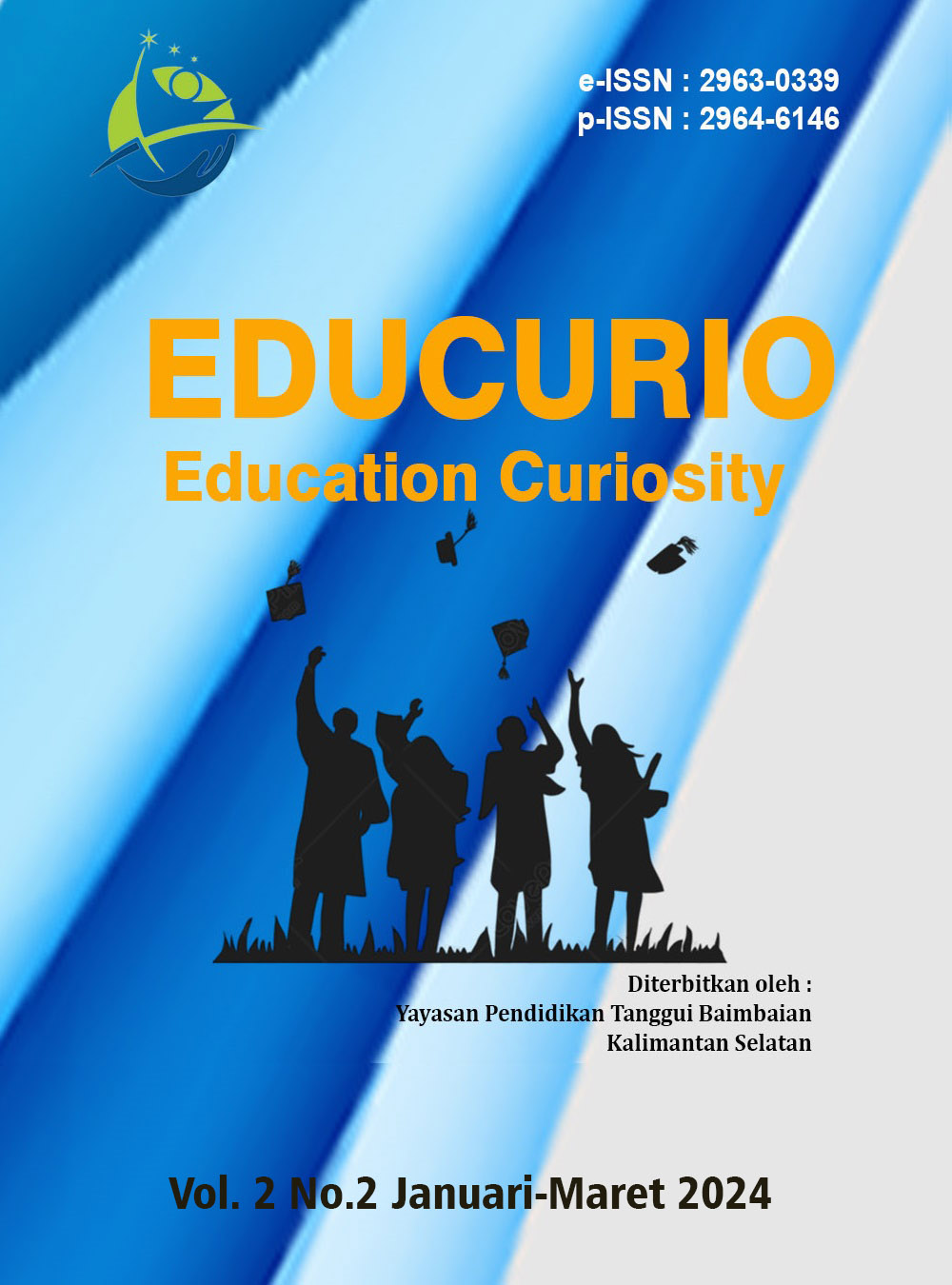The Teacher Activities In Managing Classroom At Junior High School
Keywords:
Classroom Managemen, Teacher Activities, Classroom ActivitiesAbstract
This research was descriptive qualitative study. The subject of this research was the English teacher at the seventh grade. The data was collected by using observation and interview. The result of this research show (1) Classroom management conducted is divided into five aspects. There were physical design of classroom orderly rows and separate table, rules and routines, relationships, engaging and motivating instruction, and discipline. (2) The Problem Faced by English Teacher in Classroom Management. Problems were unprepared material, motivation and students misbehavior. To solve the problem, the teacher gave a punishment and treatment
References
Ary, D., Jacobs, L. C., Razavieh, A., & Sorensen, C. K. (2009). Introduction to Research in Education (8th ed.). Cengage Learning.
Carolyn M. Evertson, C. S. W. (2006). Handbook of Classroom Management Research, Practice, and Contemporary Issues (1st Editio).
Chamundeswari. (2011). Teacher Management and their Influence on Performance and Leadership Development among Students at the Secondary Level. May.
Chan-anteza, T. K. (2020). Management of a Conducive Classroom Environment: A Meta-synthesis. Journal of Education and Practice, 11(26), 54–70. https://doi.org/10.7176/jep/11-26-06
Creswell, J. W. (2014). Research design : qualitative, quantitative, and mixed methods approaches. Sage Publication. http://journal.um-surabaya.ac.id/index.php/JKM/article/view/2203
Ekosiswoyo, R., & Rachman, M. (2000). Manajemen Kelas Sesuai Dengan Kurikulum D-II PGSD. IKIP Semarang Press.
Erden, F. T. (2010). Study on Teachers ’ Classroom Management Approaches and Experiences Öğretmenlerin Sınıf Yönetimi Yaklaşımları ve Deneyimlerinin Đncelenmesi. 9(2), 792–806.
Garrett, T. (2014). Effective Classroom Management—The Essentials. Teachers College Press.
Gutierrez, O. (2017). Classroom management strategies for teaching. https://www.pdfdrive.com/classroom-management-strategies-for-teaching-e52991876.html
Ihekoronye, E. O. (2017). Conducive School Environment : a Necessary Factor for Effective Teaching and Learning in Public Secondary Schools in Gwagwalada Area Council of Abuja. 203–213.
Lestari, Y. B., Yusra, K., Hanafi, N., Nawawi, & Nuriadi. (2022). Personal and Contextual Factors Influencing Teacher Agency in Overcoming Students ’ Learning Difficulties. Eralingua: Jurnal Pendidikan Bahasa Asing Dan Sastra, 6(2), 331–340.
Mammadova, S. (2021). How to teach English. In Scientific Bulletin (Vol. 4). https://doi.org/10.54414/mzlv3216
Mansor, A. N., Eng, W. K., Rasul, M. S., Mohd Hamzah, M. I., & Hamid, A. H. A. (2012). Effective classroom management. International Education Studies, 5(5), 35–42. https://doi.org/10.5539/ies.v5n5p35
Marzano, R. J., & Marzano, J. S. (2003). The Key to Classroom Management. Educational Leadership, 61(1), 6–13.
Mehri, C. N. (2019). English Role Teacher In Managing The Classroom. https://repository.ar-raniry.ac.id/id/eprint/10832/
Mulyasa, E. (2004). Manajemen Berbasis Sekolah : Konsep, Strategi Dan Implementasi. Remaja Rosdakarya.
Quarcoo, R. (2021). Conducive Classroom Environment: A Situational Analysis of Senior High Schools offering Clothing and Textiles in Ghana. International Journal for Cross-Disciplinary Subjects in Education, 12(3), 4529–4533. https://doi.org/10.20533/ijcdse.2042.6364.2021.0554
Sieberer-Nagler, K. (2015). Effective Classroom-Management & Positive Teaching. English Language Teaching, 9(1), 163. https://doi.org/10.5539/elt.v9n1p163
Sugiono. (2010). Metode Penelitian Pendidikan Pendekatan Kuantitatif, kualitatif, dan R&D. Alfabeta.
Tomlinson, C. A. (2014). Responding to the Needs of All Learners. 25. http://www.ascd.org/Publications/Books/Overview/Leading-and-Managing-a-Differentiated-Classroom.aspx
Wiyani, N. A. (2019). MANAJEMEN KELAS, TEORI DAN APLIKASI UNTUK MENCIPTAKAN KELAS YANG KONDUSIF (R. K. Ratri (ed.)). Ar-ruz Media.
Downloads
Published
How to Cite
Issue
Section
License
Copyright (c) 2024 Desri Raynaldo, Lili Perpisa, Sesmiyanti

This work is licensed under a Creative Commons Attribution 4.0 International License.
License and Copyright Agreement
- Authors retain copyright and other proprietary rights related to the article.
- Authors retain the right and are permitted to use the substance of the article in their own future works, including lectures and books.
- Authors grant the journal the right of first publication with the work simultaneously licensed under Creative Commons Attribution License (CC BY 4.0) that allows others to share the work with an acknowledgment of the work's authorship and initial publication in this journal.
- Authors are able to enter into separate, additional contractual arrangements for the non-exclusive distribution of the journal's published version of the work (e.g., post it to an institutional repository or publish it in a book), with an acknowledgment of its initial publication in this journal.
- Authors are permitted and encouraged to post or self-archive their work online (e.g., in institutional repositories or on their website) prior to and during the submission process, as it can lead to productive exchanges, as well as earlier and greater citation of published work.












